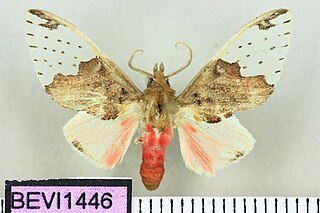
Scaptius is a genus of moths in the family Erebidae erected by Francis Walker in 1855.
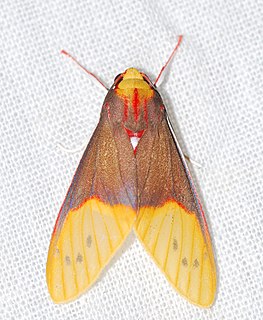
Evius albicoxae is a moth of the family Erebidae. It was described by William Schaus in 1905. It is found in French Guiana and Peru.
Glaucostola flavida is a moth of the family Erebidae first described by William Schaus in 1905. It is found in French Guiana, Guyana and Trinidad.
Haemanota maculosa is a moth of the family Erebidae. It was described by William Schaus in 1905. It is found in French Guiana.
Haemanota sanguidorsia is a moth of the family Erebidae. It was described by William Schaus in 1905. It is found in French Guiana, Suriname, Guyana, Venezuela and on Cuba.
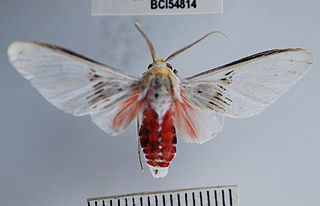
Idalus aleteria is a moth of the family Erebidae. It was described by William Schaus in 1905. It is found in Costa Rica, French Guiana, Guyana, Peru, Bolivia and Trinidad.
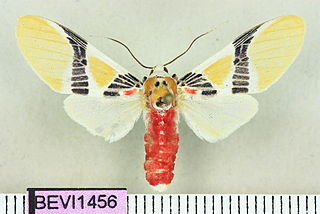
Idalus carinosa is a moth of the family Erebidae. It was described by William Schaus in 1905. It is found in French Guiana, Brazil, Venezuela and Bolivia.
Pryteria apicata is a moth in the family Erebidae. It was described by William Schaus in 1905. It is found in French Guiana.

Rhipha albiplaga is a moth in the family Erebidae. William Schaus described it in 1905. It is found in French Guiana and Amazonas.
Scaptius chrysopera is a moth in the family Erebidae. It was described by William Schaus in 1905. It is found in French Guiana.

Scaptius obscurata is a moth in the family Erebidae. It was described by William Schaus in 1920. It is found in Guatemala.
Scaptius prumaloides is a moth in the family Erebidae. It was described by Walter Rothschild in 1909. It is found in French Guiana, Brazil and Amazonas.
Scaptius vinasia is a moth in the family Erebidae. It was described by William Schaus in 1910. It is found in Costa Rica.
Scaptius holophaea is a moth in the subfamily Arctiinae. It was described by George Hampson in 1905. It is found in French Guiana, Suriname and Amazonas.
Symphlebia catenata is a moth in the family Erebidae. It was described by William Schaus in 1905. It is found in Brazil and French Guiana.

Symphlebia neja is a moth in the family Erebidae. It was described by William Schaus in 1905. It is found in French Guiana and the Brazilian state of Amazonas.
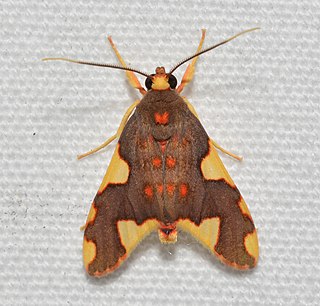
Trichromia carinaria is a moth in the family Erebidae. It was described by William Schaus in 1905. It is found in French Guiana.
Trichromia complicata is a moth in the family Erebidae. It was described by William Schaus in 1905. It is found in French Guiana.

Trichromia gaudialis is a moth in the family Erebidae. It was described by William Schaus in 1905. It is found in French Guiana and Trinidad.
Trichromia tremula is a moth in the family Erebidae. It was described by William Schaus in 1905. It is found in French Guiana.








